In Part’s One and Two, we explored the victims backgrounds, got to know some of the people around them and joined the search party who sadly discovered their bodies. This third and final instalment of The Hinterkaifeck Murders details the autopsies, crime scene evidence and suspect list.
Autopsies;
Please note – an autopsy report is missing from the Hinterkaifeck files, all information below comes from third party sources.
All six of the victims were examined between Thursday 6th April and Friday 7th April (1922) by a Dr Johann Aumuller; Cazilia Gruber, Cazilia Gabriel and Viktoria Gabriel were autopsied on the Thursday, followed by Maria Baumgartner, Joseph Gruber and Andreas Gruber on the Friday. The autopsies were carried out in the courtyard at the front of the farmhouse, with each victim being carried from their resting place within the barn as their turn came around. It is theorised that it was far easier for the coroner to come to Hinterkaifeck than it was to arrange transportation of the six bodies, but this is not something we can be sure of.
From his rather makeshift examination room, Dr Aumuller determined from the victim’s injuries that it was probable more than one murder weapon was used in the attacks; naming three possibilities – a cross axe, reuthaue (mattock in English) and hoe. The mattock would become the weapon most synonymous with the Hinterkaifeck murders, as well as being able to deal devastating blows it would have also had deliberately protruding screws which could explain some of the smaller injuries.
The time of death(s) was estimated to be between 8pm and 11pm on the night of 31st March 1922, this conclusion seems to have been drawn more from the police investigation than the autopsies, however without the official report we cannot be sure. After the discovery and following examination of the victims by the authorities and Dr Aumuller, it was also the consensus that this was a crime of passion. The violence of the blows and the number of them metered out to each of the residents of Hinterkaifeck were ‘overkill’, most likely to have been driven by rage.
Thursday 6th April –
Cazilia Gabriel; dressed in her nightgown. Injuries; wide, gaping transverse wound to the neck (possibly caused by either a penknife or band iron which were both discovered during the later demolition of the farmhouse), circular wound to the right side of the face, lower jaw shattered, skull smashed with several blows. Small, bloody fingerprints on the face and neck, right hand holding a tuft of hair. Dr Aumuller concluded that Cazilia had survived the wound to her neck for two to three hours afterwards, believing that the fingerprints signified her either trying to stem the bleeding or, perhaps more likely, reacting in shock to the pain she would be in. He also surmised that the hair was her own, most probably torn out by herself through the pain of her injuries and the fear following the attack; it was possible that she witnessed her family’s murders but she certainly would have lain for some time next to their bodies.
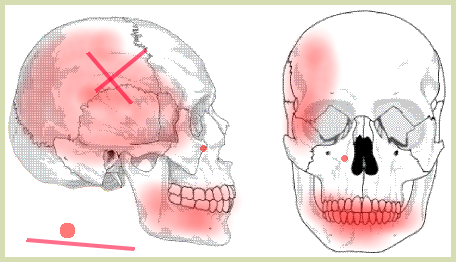
Cazilia Gruber; dressed in working clothes and one slipper. Injuries; bruising near the right eye (perimortem?), seven blows to the head, one of which was in a triangular shape and skull cracked. There are also mentions of strangulation however it is unclear whether this was on Cazilia or her daughter, Viktoria. We have this information from a surviving telephone memo but it merely states ‘one woman’. It is also unknown if this injury was perimortem.
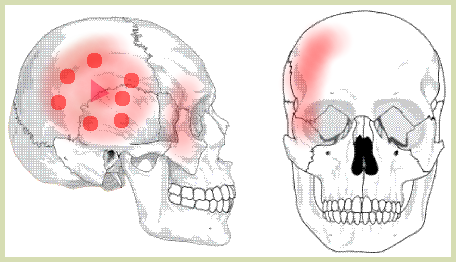
Viktoria Gabriel; dressed in working clothes with stockinged feet. Injuries; nine star-shaped wounds to the head, right side of the face smashed with a blunt object, a small round injury of a pointed tool on the upper skull, smashed skull. Strangulation marks? See Cazilia Gruber. It was also noted by the Public Prosecutor, Renner Ferdinand, that she (Viktoria) was not pregnant. It is unclear whether this was standard procedure in autopsies or it was requested. (In his report, dated April 10th 1922, he also mentions the incest conviction).
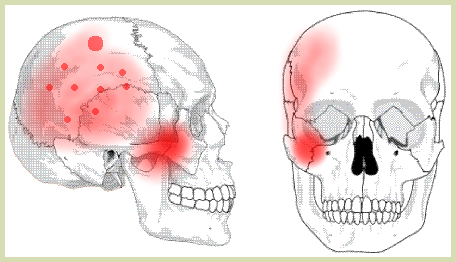
Friday 7th April
Andreas Gruber; dressed in underpants and a shirt. Injuries; right half of the face smashed, cheekbones protruding, flesh seemed shredded.
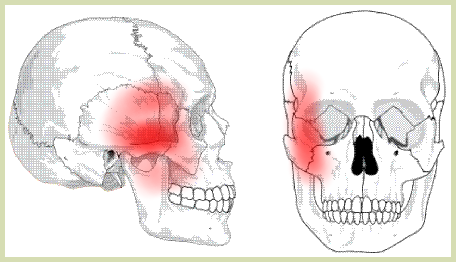
Josef Gruber; dressed in a nightgown. Injuries; killed by a single, heavy blow to the face, top of the bassinet destroyed.
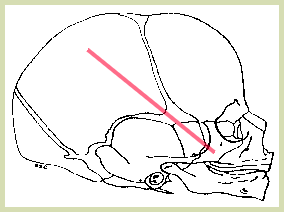
Maria Baumgartner; fully clothed, including shoes. Injuries; crosswise (criss-cross) blows to the head, a 4cm deep wound to the back of the head that was probably caused by a sharp hoe or axe.
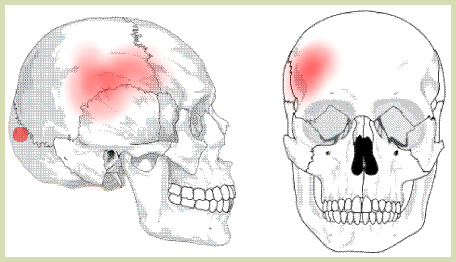
During the autopsies the victim’s heads were removed and sent to the Pathological Institute of the University of Munich, for ‘preparation. From studying various translated statements it seems this ‘preparation’ involved the study and then cleaning of the skulls. There was hope that the experts at the Institute could provide the authorities with more answers.
side note; on May 2nd 1922(?), a bailiff at the District Court of Kaufbeuren named Heinrich Ney delivered the prepared skulls to a clairvoyant named Helene Jurgens (aka Miss Ju) at the request of Renner Ferdinand. The reasoning behind this, according to Heinrich, is that there was a reward of 100,000 marks for the arrest of the Hinterkaifeck murderer (this would later rise to 500,000 marks). The skulls would find themselves in the hands of at least three clairvoyants during the first year following the murders. Their statements will be linked below.
It was the intention that the skulls would one day be returned to the victims but sadly they were lost, along with thousands of other records and pieces of evidence not just linked to Hinterkaifeck, during the destruction and chaos of World War II. Why they were still ‘in circulation’ 17 years after the murders is unclear.
Evidence (room by room)
The Barn
- The Rope; Following Cazilia Gabriel’s autopsy, the two porters who were carrying her stretcher back into the barn were surprised to discover a hay rope hanging from a rafter. Their surprise was so much, according to Heinrich Ney, who was also present, that they cried out and almost dropped the stretcher. This was because the rope had not been there just a little while ago when they had passed by the exact same spot. Heinrich describes the rope as thumb-thick, with the knot that was connecting it to the beam pulled tight and the rope itself hanging taut as if someone had just placed their entire weight upon it. He also claimed that you could see hand imprints in the dust that had settled on top of the beam. The people outside the barn were alerted and, believing that the perpetrator may well have only recently left the property, a sniffer dog was called to duty. Unfortunately no trace could be found of this apparently hidden man despite their best efforts. Heinrich notes that fresh snow had fallen that day. It was surmised that the hay rope was a way for the perpetrator to access the attic above, which appeared to have been used as both a hiding place and lookout, without using the stairs in the main house. It could then be hidden by simply pulling it up onto the rafters.
- The Hay Pit; Indentations were found in the hay on the floor of the barn, seemingly to point to two persons lying down for a long period of time. Human excrement was found nearby.
side note; on the floor plan there are two options for the location of both the rope and hay pit. This is due to conflicting statements made around the time of the investigation. Personally I believe that ‘option 2’ in both instances is more likely.
- The Lookout; Upon investigation of the attic space that ran the length of the barn building two supposed lookout points were discovered. Roof tiles had been pulled back in both instances to give a clear view of the courtyard below and there were indentations present suggesting that one or more persons had spent a considerable amount of time in one place.
- The Band Iron; During February and March of 1923 the farmhouse was demolished by the late Karl Gabriel’s family. As the home was pulled apart it would reveal three possible murder weapons including a bloodied band iron (strip/strap iron). A strap iron is flat steel, varying in thickness, that is often stored rolled up and is generally used as a starting metal in forging. The particular piece found at the crime scene had a sharp edge and was smeared with blood, it was tentatively attributed to Cazilia Gabriel’s neck injury as investigators had struggled to connect this particular wound with the suspected weapon of a Reuthaue (mattock). The band iron was found in the barn buried underneath the hay (some sources say under the floor but it is unclear if it was buried or under boards) close to where the first four victims had been discovered.
- The Pocket Knife; Also discovered during the demolition was a pocket knife, it is described as ‘rusty’ by some, bloodied by others. It was discovered in the vicinity of the band iron, and in the same ‘room’ as the first four victims. The only injury that it could be attributed to was Cazilia Gabriel’s neck wound. There were theories amongst the authorities and locals alike that the knife had not been used as a weapon but had instead been accidentally dropped by the murderer. However, Kresenz Rieger, the former maid, identified the knife as one she had seen during her time at the farm, claiming that it was actually Andreas Gruber’s.
side note: Lorenz, the neighbour and prime suspect for many, was spotted on the property shortly after the demolition. It is said he was digging around in the rubble. Some believed he could have been looking for the pocket knife
- The Pickaxe; This was first discovered by Lorenz as his search party passed through the barn building. According to him (Lorenz) he had taken it from one of the cattle, who had been licking it, and had then propped it against the feed bar. Some reports state that he handed this over to the authorities but others claim that the investigators found it themselves. The pickaxe was the suspected weapon until the autopsies were performed and it was determine that it could not have dealt out all of the injuries shown on the victims. It could not be proven that the brown marks on it were blood, nor were there any fingerprints.
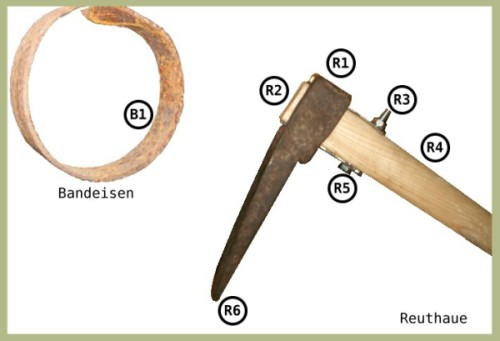
- The Door; It is from behind the door between the feeding room and the stable space, that investigators believe the attacks came on the first four victims. Georg Reingruber, the Chief Inspector, talks of how there was a lot of blood spatter present on it. It also noted that the doorway is far too narrow to allow more than one person through at once.
- The Scream; An experiment was conducted to determine if a human scream could be heard from the stable by a person in the main house. Investigators tried this with every room in the farmhouse and it was concluded that nothing could be heard. It is unclear if the roar of the cattle could be heard, and whether by disturbing them the residents could have been lured into the barn.
side note; in Parts One and Two it was mentioned that the door had been placed on top of the victims bodies. In some statements read during research for Part Three it appears to have been a board/old door and that the one leading from the feed room was still hanging in place.
The Engine House Attic
- Spread across the floor of the small, shoulder height attic space above the engine house (the site of the purported break in), was a layer of hay which showed signs of one or more people laying upon it for some time. Near to the door of the smokehouse, which sat above the kitchen, hung strips of smoked meat; one of these had been half cut away.
The Kitchen
- Blood Spatter; There were a few blood stains visible on the stone floor however the perpetrator sadly left no imprints nor footprints.
- Missing food; It was determined later on that some bread and cooked meat was missing from the pantry. There was also a pot of soup on the stove that was at first thought to have been left by the family however it showed no signs of having sat there for four days. It was of the opinion of investigators that a person or persons unknown had been staying at the farm prior to the murders.
side note; no follow up was made on Michael Plockl’s statement of the foul smelling smoke coming from the oven’s chimney and his encounter with an unidentified person on the property.
Maria’s Room
- Blood Spatter; There was a large pool of blood underneath and surrounding Maria’s body, some sources state that there was also peripheral spatter present.
Hallway (leading to front door)
- Blood Spatter; Two blood stains were found on the stone floor of the hall that lead from the front door to the kitchen.
Residential Attic
- The Reuthaue; The third, and most likely, weapon to be found during the 1923 demolition. It had a screw protruding from its handle which could be attributed to some of the smaller wounds inflicted on the victims. According to Georg Siegl, a frequent worker at Hinterkaifeck, the reuthaue had been made by Andreas Gruber and that he recognised it because of the bad craftsmanship i.e the screw. The tool was found in the attic space that spanned Andreas and Cazilia’s bedroom. Some reports state that it had actually been hidden in a boarded compartment within the attic’s floor. Human blood and hair was found to be present on it, along with animal hair.
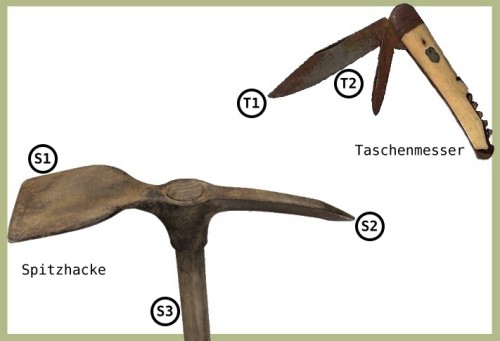
side note; nothing was found to be out of place in Andreas and Cazilia’s bedroom. It was noted that both beds seemed to have been used when the crime was discovered and Andreas’s robe was found in there.
Viktoria’s Bedroom (inc. Cazilia and Josef)
- Blood Spatter; There were traces of blood on the floor of the bedroom but, again, no footprints or imprints of any kind.
- Money; The authorities first believed that the motive was theft however during the first few days of the investigation a tin was found in a wardrobe in Viktoria’s room. It was hidden behind and/or underneath sacks of grain and contained gold and silver coins worth several thousand Marks. (Other assets including ‘paper money’ and bonds were also found around the property)
- Children’s clothing; As noted by the original search party the authorities also spotted that the drawers from the wardrobe had been removed and placed on the bed, along with the children’s bank books and a wallet. The scene did not reflect a rushed ransacking so it was questioned as to whether Viktoria herself had been in the middle of something when she was somehow lured to the barn. Was she merely organising laundry or doing the family administration, or was she packing? Preparing to leave following the supposed row with her Father the previous night.
Suspects and Persons of Interest (alphabetically listed)
Please note – this list was pulled from the main source material, it is quite extensive so the summary of each suspect has been kept brief. Some names on the list were people who were merely verbally accused by another and brought in by the authorities for questioning, in this instance a note shall be made in their synopsis.
Leonard Altstatter (1923, 1926)
Was accused by a merchant named Georg Seidl, who claimed that at a New Years Day gathering in 1923 he heard Leonard giving a detailed account of the murders. He (Leonard) was taken in by the authorities but soon cleared of any suspicion. In fact, it would turn out that Mr Seidl was a pathological liar and in 1926 would spend three months in prison for false accusations. Leonard Altstätter was not the first, nor would he be the last, man to have Georg Seidl point the finger at him.
Amberger Brothers; Heinrich, Johann and Sebastian (1941)
It is unclear what lead to the three men being connected to Hinterkaifeck by the authorities, however a ‘request for investigation’ document still survives which states that Heinrich was in prison at the time of the murders. His brother Sebastian was said to have emigrated to Canada in 1925 and could not be found. There is no further information regarding Johann.
Josef Bartl (1922 – 1949)
It was claimed that Josef was ‘mentally ill’ and police labelled him a dangerous robber. According to reports he was hospitalised in Gunzburg but managed to escape the institute in July 1921. There were rumours that he had joined the Foreign Legion but this was never proved. Despite many searches being carried out, usually following reports of a sighting, he was never found. Josef was also another of our suspects to be named by Georg Seidl.
Beuschl (?)
A name that was thrown out by our old friend, and big ol’ fibber, Georg Seidl. It is unclear whether authorities actually linked the name to a specific person but there is documentation from the Public Prosecutor stating that this is, without doubt, not the murderer.
Bichler Brothers; Karl and Anton (1922)
Due to their connections to several thefts in the area, the fact that they had both worked at Hinterkaifeck and Kresenz Reiger’s statements regarding Anton’s threats towards the family, both men were questioned soon after the murders took place. However, they each had pretty solid alibis for the night of the murders and, despite the authorities best efforts, it could never be proved that they had committed the terrible crime.
Josef Bork (1926)
Josef was linked to the murders through the Blunder brothers who were suspects in another robbery that took place on April 4th 1922 (the day the murder victims were found) and had similarities to the Hinterkaifeck crime. He, along with his son, provided the brothers with an alibi to the robbery. However, in 1926 the mistress of Paul Blunder ‘betrayed’ him to the authorities, and soon after Josef admitted that he was threatened into lying to them by the Blunders.
Blunder Brothers; Ludwig and Paul (1922 – 1926)
The two brothers committed a robbery with very similar traits to the Hinterkaifeck case on April 4th 1922 (the day the murder victims were found). Although suspicion originally did fall on them an alibi was provided by Josef Bork (see above) and his son. Then in 1926 Paul Blunder’s mistress came forward to implicate him and his brother in the (4th April) robbery. She also stated that Paul had described the Hinterkaifeck murders to her in-depth and, once when they were passing by the, now demolished, crime scene sometime in 1925, had also described the property in detail to her. Through this revelation it was discovered that the Blunder brothers were not far from Hinterkaifeck at the time of the murders, however no evidence could definitely tie them to the crime.
Karl Burkhart (1934)
Another who was accused by Georg Seidl but it was quickly discovered that he was in prison at the time of the murders and was not released until 1927.
Franz Engelniederhammer (1934)
Oh yes, another Georg Seidl victim. He too was in prison at the time of the murders and quickly exonerated.
Fuchsbrunner Brothers; (1926)
The two brothers were also accused by, the now infamous, Georg Seidl. It would be this particular wrongful finger-pointing that would lead to Georg being sentenced to 3 months in prison for ‘false accusation’.
Karl Gabriel; (1922?)
Yes, even the late husband of Viktoria Gabriel would get his turn as a potential suspect. There were many rumours that he had not died in Arras but was actually a deserter who had returned home after the war. The theory was that discovering his wife with another child, and possibly one fathered by her own Father (gross), had thrown him into a hate-filled frenzy. However, many of the men who served with Karl gave statements confirming that, whilst he had suffered a severe, and deadly, head injury on the frontline the body had unmistakably been his.
Gabriel Brothers; Anton, Jakob and Josef (1937)
In 1937 Maria Miessel, a former maid at the Gabriel’s (Karl Gabriel’s family) farm, came forward with information that was good enough for the three brothers to be taken into custody. Her statement was very detailed and seemed to heavily implicate them, she also claimed to have been sent to Hinterkaifeck to milk the cows in the days prior to the discovery of the bodies. As the investigation into the brothers continued it is claimed that her version of events began to seem highly improbable, if not impossible, and rumours began that she had been encouraged by her husband to make the accusation due to the large reward on offer. Sadly all of this would lead to Maria being declared as ‘mentally ill’ and institutionalised. However, even after her release she would maintain her story, despite her husband divorcing her and her tarnished reputation. Whether she was telling the truth or not is still unclear.
What we do know is that the Gabriel brothers were not well-liked and labelled as ‘imperious’ in many statements. It was also known that the Gabriel farm was in a state of poor repair and the eventual sale of the Hinterkaifeck property gave them a much needed injection of cash.
Gump Brothers; Anton and Adolf (1922 – 1952)
In 1922 authorities investigated Adolf and three other men from the Freikorps Epp, a right-wing, paramilitary formation mostly made up of war veterans. At the time this organisation was very well known to investigators and were responsible for several murders. Adolf himself is said to have played a main part in the murder of nine farmers in Silesia whilst under its command. Although nothing would be proved during this initial investigation the Gump name would be linked once again to the Hinterkaifeck murders in 1951. Ten years previously, unknown to both the authorities and the brothers their sister, Kreszentia Maier, confessed on her deathbed that she knew her brothers had been the Hinterkaifeck murderers. The Chaplain who heard her confession never went to the authorities, it would not be until a young student of his wrote a ‘letter to the editor’ that investigators became aware of it. As Adolf had passed away in 1944 it was Anton alone that was brought in for questioning, however he was eventually released as a connection to Hinterkaifeck could not be substantiated.
Josef Hartl (1922)
Josef worked at Hinterkaifeck for a period of time in 1920(?) and stated that he left due to poor treatment. He admitted to having broken in to the attic of Hinterkaifeck between late October and early November of 1920, where he spent the night and stole a small amount of food. His alibi of being at his new employers residence at the time of the murders was confirmed by the two other servants who worked with him.
Albert Hofner (1925)
Originally viewed as a key witness, the engine fitter Albert would come under suspicion three years after the murders. Gendarmerie Commander Schopf suspected that Albert was actually the perpetrator and reported it to the public prosecutors office in April 1925. Albert would very quickly be ticked off the list of suspects, with nothing to tie him to the crime excepting his presence on the day the victims were found.
Hoffman (?) (1925)
A name mentioned in a report that currently has no information connected to it except for that they were ‘war damaged’. It appears that whatever his injuries they were bad enough to exonerate him from further suspicion.
Kagerbauer Brothers; Otto and Karl (1924)
From the wording of the translated statements it is unclear if the brothers had committed other robbery/murders or were only suspected of having been involved in the Hinterkaifeck crime. Once they were arrested it soon became apparent that they had been working and living quite a distance from Hinterkaifeck at the time and were cleared of any suspicion pertaining to the murders of 1922.
Andreas Kaspar (1924?)
In a statement made by Karl Bichler, Andreas is said to have told several people that if he needed a lot of money he knew where to get it (inferring Hinterkaifeck). He was also married to Barbara Thaler, sister of the suspected Thaler brothers. It is rumoured that the house being built for him and his wife was stopped due to lack of funds but works restarted after the murders, with the craftsmen being paid in gold.
Wendelin Kaspar (1924?)
Father of Andreas Kaspar, he was a close friend of Andreas Thaler, father of the suspected Thaler brothers. It was reported that after the murders their friendship turned sour. He also fell into dispute with his son, which would culminate in a physically violent argument, along with a threat from Andreas to report him for the murders in Hinterkaifeck.
Jaroslav Kellner (1926)
A friend of Josef Bärtl, and a known thief and fraudster, Jaroslav was accused by Georg Seidl of being involved with the Hinterkaifeck murders. He was cleared of all suspicion along with Josef.
Anton Kloiber (1927)
Anton was a locksmith and also a thief. At the time of the murders he was travelling with his lover Walburga Bengl who, according to her statements, he did not treat well. She finally managed to escape him whilst he was in prison and married another man. When Anton discovered this he persecuted her in any way he could, in a desperate retaliation Walburga gave further information to the authorities regarding his illegal activities, despite it meaning she would also have to serve jail time. During one of her hearings she provided information that showed a possible link between Anton and Hinterkaifeck, namely that he had disappeared for a few days around the time of the murders and when he returned she was asked to sell stolen goods that could have come from the crime scene. No official reports could be found regarding the outcome of these accusations but it is presumed that no charge could be made against him pertaining to the murders at Hinterkaifeck.
Georg Mader (1922)
At the time of the murders Georg was a Blacksmith apprentice in Waidhofen and was known to often deal with Karl Bichler. Simon Rieblander, the witness who had seen two suspicious men on the side of the road the night of the murders stated that one could possibly have been Georg Mader. There are no records to show where this line of enquiry went.
Eduard Mertel (1949)
Officially put forward as a potential perpetrator by Gendarmerie Guard Johann Anneser, an alibi was provided and he was removed as a suspect.
Nameless Servant (1922)
Both Andreas’s (Gruber) brother, Bernhard, and a local farmer, Josef Schratzenstaller, claimed to have met a young man who was employed by Andreas Gruber in January/February of 1922. Between the two witnesses the unknown man was said to be between 18 and 26 years old, medium-sized, beardless and round-faced. Bernhard never spoke to the stranger, however Josef met him at a music event whilst he (nameless servant) was still in the employ of Andreas Gruber. He commented on the young man’s strange demeanour in his statement. It is believed that, whoever he was, he only stayed at Hinterkaifeck for four to six weeks and that this was due to his former employer not releasing his belongings and so forcing his hand into returning to him. When Bernhard saw Andreas two weeks prior to the murders his brother stated that he had not been able to keep the young man in his employ. He was never identified.
Fritz Negendank (alias) (1929 – 1932)
Eventually identified as Otto Linke in 1932, ‘Fritz’ was wanted in connection to crimes committed in Munich and Hamburg. The former locksmith escaped from a welfare institute and supposedly spent several years with a travelling circus. He then went on to join the Foreign Legion under the name Fritz Negendank before moving to the French Foreign Legion and switching his first name to Paul. It is said that ‘Fritz’ often talked about the Hinterkaifeck murders and seemed to know a lot about them. He was never located by the authorities.
Neuhierl (1925)
Accused by a fellow Straubing prisoner along with another man, the investigation had not been completed in the only surviving document including this name. It is presumed he was found to be above suspicion.
Ferdinand Niklas (1922)
Between 1918 and 1922, Ferdinand visited Hinterkaifeck a number of times due to his work as a gold and silver trader, and he freely admitted that he knew the victims well. He was checked as a possible suspect early on in the investigation and was cleared of all suspicion.
Josef Pfleger (?) (1935, 1938)
In 1935 Josef’s daughter Maria went to the authorities claiming that her Father had admitted to being the Hinterkaifeck murderer. Her claims were serious enough to cause Josef to be arrested (28th January 1935) and interrogated numerous times. During his imprisonment he maintained his innocence, stating that his daughter was lying. On February 1st 1935 the arrest warrant was lifted and he was released, this was due to lack of evidence, inconsistencies in Maria’s version of the murders, their (Maria and Josef) bad relationship and also that Josef… well, the authorities just didn’t think he was ‘man enough’ to carry out the crime. He was also continually drunk.
Alfons Gustav Philippi (1922)
A much wanted robber, his name was linked to Josef Bärtl when it came to the Hinterkaifeck crime. However, it was discovered that he had been in prison at the time of the murders.
Simon Reiblander
Simon provided police with a statement on April 10th 1922 regarding the two men he saw near the Hinterkaifeck property in the early hours of April 1st. One of the investigative team became suspicious of Simon’s hints that one of the men could have been Karl Bichler and also his purchase of a property shortly before the murders despite not having much money. This seems a passing suspicion, or at least one that was not supported by others, as there is no mention of Simon being interrogated or even questioned after his initial statement.
Reith (?)
This name was linked to Beuschl’s by ‘liar, liar, pants on fire’ Georg Seidl. In this instance we know that the name was actually identified by the authorities and the man was cleared of all suspicion.
Lorenz Schlittenbauer (1922 – 1931)
For all the readers who made it through Part’s One and Two, it is probably no surprise that Lorenz is on this list. From his rocky past with the Gruber/Gabriel family to his suspicious behaviour during the discovery of their bodies, everything this man did and said caused him to be everyone’s favourite suspect. Whilst it is moot to repeat information that can be found in preceding posts there are two other events that seem to be worth mentioning here. Firstly, it is rumoured that Viktoria travelled to a nearby town to legally claim more maintenance money from Lorenz so as to fall in line with the current inflation (Germany’s economy was a mess post-war and would actually implode in November 1923). This was never proved but if it did happen it could provide Lorenz with a motive. Secondly, Lorenz sadly lost his four week old daughter, Anna, to whooping cough and she was buried on March 30th 1922, a day before the murders occurred. Some theorise this could have been a trigger, especially with the questionable paternity of Josef Gruber and the strained relationship between the two families.
According to available records Lorenz would give his final, official, statement in 1931. No charges were ever made against him; could that be because he actually was innocent or did he somehow manage to get away with murder?
Ignaz Schmaderer (1925)
Ignaz was a member of the ‘Schmaderer Gang’ which was present in the Hinterkaifeck area a few years prior to the murders. Their crimes bore many similarities to the Hinterkaifeck murders, their common MO being that they would loose a cow to lure farmers into a barn where they would kill them then rob the property. In 1903, Ignaz was sentenced to 15 years in prison and at the time of the murders had been released and was working as a day labourer. Although the payroll at his job showed that he had not attended work on March 31st 1922 it was proved that there was not enough time for him to able to reach Hinterkaifeck, commit the murders and then return to work at 6am on April 1st. However, it could be conceivable that whomever had killed the Grubers/Gabriels was copying the Schmaderer’s MO.
Johann Schwoyer (1922)
It is unclear how Johann became a suspect but on April 12th 1922 he was taken into custody and his trousers and plucking bag were taken from him in order to be tested for human blood. The results came back negative and the Medical Committee stated that no further tests were possible.
Schreier Brothers; Andreas and Karl (1922)
Andreas Schreier was one of the servants that provided an alibi for Josef Hartl (see above), he would also be named by a fellow prisoner as a possible suspect for the Hinterkaifeck murders. A statement was also provided by a neighbour of the brother’s Mother, stating that she had confessed to their Father that their sons had been involved. At the time sufficient proof could not be found and their alibi’s seemed to cover them for the time of the murders. Records state that they had to be released due to ‘a lack of urgent grounds for suspicion’. Another document, written in 1971, appears to show that the brothers were still being looked into but that the statute of limitations could prevent them from being charged.
Georg Siegl (1922)
According to the ex-maid Kresenz Rieger, Georg committed a burglary at Hinterkaifeck during early November 1920. He also regularly helped with the harvest at the farm so would know the layout of the building and surrounding land very well. No charges were ever filed and he seems to have been questioned only once.
Thaler Brothers; Andreas and Josef
Suspected early on simply due to their previous crimes, extensive investigations were done into the entire Thaler family. As mentioned in ‘Andreas Kasper’ construction of a new house was halted previous to the murders and began again shortly afterwards, with the workers being paid in gold coin. The Thalers would later say that the house was finished with the help of credit institutions. The ex-maid Kresenz Rieger stated that Andreas Gruber caught the brothers in an attempted burglary sometime between 1920 and 1921 and would also say that Josef Thaler often visited her bedroom window at night to ask for the ‘money hiding place’. Despite the authorities efforts no charges were ever brought against them.
Peter Weber (1922)
Peter became known to the authorities after his former roommate, Josef Betz, stated that he had previously talked about going to Hinterkaifeck and killing Andreas in order to steal gold. Josef said that Peter had asked him to go too and that they could split the spoils. When he (Josef) heard of the murders he immediately thought of his former roommate and went to the police. Investigations were carried out but Peter provided a very good alibi, between work and being witnessed at home by his brother-in-law there seemed no possible way he could have been the perpetrator. However, if Josef is to be believed Peter does not appear to be a good man in any way.
Footnote – In 2017 a book was published called ‘The Man from the Train’ which was written by Bill James and his daughter Rachel McCarthy. The authors claimed to have discovered the identity of an overlooked serial killer operating in the US during the late 1800’s and early 1900’s. One of the more well known cases they investigated was the Villisca Axe Murders, but there were many more with very similar MO’s. The details of these cases all showed similarities to the Hinterkaifeck murders. Bill and Rachel’s main suspect was Paul Mueller, a man who was, unsuccessfully, hunted for the 1897 murders of a family in Massachusetts. They suggested he could have returned to Germany to escape the police and could well have been the perpetrator at Hinterkaifeck. If he was indeed the Villisca murderer then this could be a possibility, however at the time of our case he would have been about 60 years old.
Conclusion
Sadly it is almost certain that the perpetrator of these murders will never be identified, and most definitely will not be punished for their crimes. Although many cold cases are now being solved with the advancement of forensic knowledge and technology, there is so little surviving evidence from Hinterkaifeck that it seems impossible.
In 2007, a group of students at a German police academy examined the case and, whilst they applauded the extensive investigation, they were highly critical of the forensics. Their main point was that no fingerprints were taken despite this being a common practice at the time. Another crucial piece of evidence, the skulls of the victims, were also never returned to their bodies and are now lost.
On completion of their modern investigation, the students admitted that it is highly unlikely that the murderer(s) will ever be identified, but they did all agree upon one main suspect. The name was not released out of consideration for their surviving relatives.
Sources:
[] https://www.hinterkaifeck.net/wiki/index.php?title=Hauptseite
[] https://www.hinterkaifeck.net/wiki/index.php?title=Datei:Grundriss.gif
[] https://en.wikipedia.org/wiki/Hinterkaifeckmurders
[] https://en.wikipedia.org/wiki/TheManfromtheTrain
Proudly powered by WordPress



